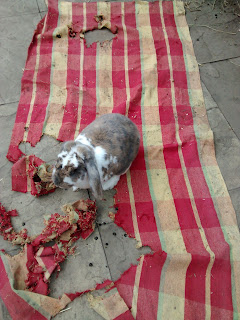Part of the problem is my lack of transport. After several near-death experiences on my borrowed
bike I’m refusing to drive over here until everyone agrees to join me on the correct,
left, side of the road, something I inadvertently keep trying to revert to every
time I turn a corner without concentrating.
Cycling is useful for shorter trips (including the 10 mile cycle to the
office - distance has a different meaning here) but the sheer size of Minnesota means that I could cycle for hours are
still not be in the countryside.
I’d noticed however, that the office which is kindly hosting
me during my secondment to Minneapolis, and which is outside of the main city,
albeit in an industrial wasteland between the Mall of America and the
International Airport rather than in anything that could be classed as
countryside, was next door to a ‘National Wildlife Refuge’. Based on the abundant and typically
enthusiastic signage (1km to Wildlife Refuge!’ ‘ Next Exit for Wildlife Refuge!’)
I assumed the wildlife refuge must be a hotspot for wildlife, most likely
teeming with small and furry creatures who arrive carrying their worldly possessions
in red spotted handkerchief, assuming of course that they successfully avoid the major eight-lane highway that runs past
the entrance. I decided to shift my
running to lunchtime in order to check it out.
Inside the wildlife refuge was extremely attractive, probably
best described as a wetlands nature reserve which flanked the Minneapolis river. The running track followed the treeline along
the river, and the shade was extremely welcome given the 30oC midday
temperatures. Possibly also because of
the midday temperatures, I didn’t see much wildlife. Although the long grass was buzzing with the
sound of hundreds of grasshoppers (or possibly crickets) it was too hot for
anything to show itself. In fact the only
animals I saw for 20 minutes were frogs, all exactly the same colour as the path
and very disconcerting when they leapt out unexpectedly from beneath by
descending feet. Lucky for them I’m not
very fast at the moment. On the way back
I saw – to great excitement! Half a
ribbon snake! Or at least half a
Google-says-it’s-a-ribbon-snake, snake.
Half a snake in this case because, alerted by the thud of my feet as I
intermittently jumped over a frog, it was whipping off the path and into the
grass. Still, a definite tick in the eye-spy
book of genuine American wildlife.
Luckily I have also been able to satisfy my need to spend
time with animals by wiling away several happy hours in the livestock barns at
the State Fair. I discovered an entirely
new type of goat, the La Mancha. An
American dairy breed notable for its tiny ears, and another tick in my American
wildlife book (OK, possibly a wildlife book that I’ve added additional pages to
for farm animals). Other than that I'll just have to make do with Skyping the guys at home. Just over seven weeks to go!

































